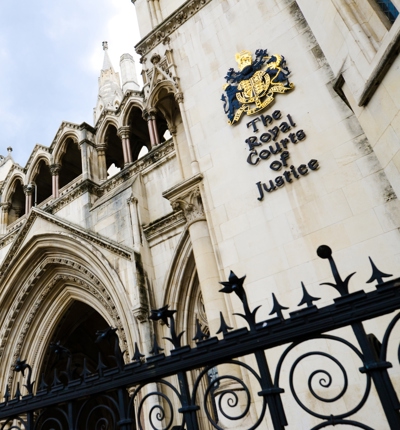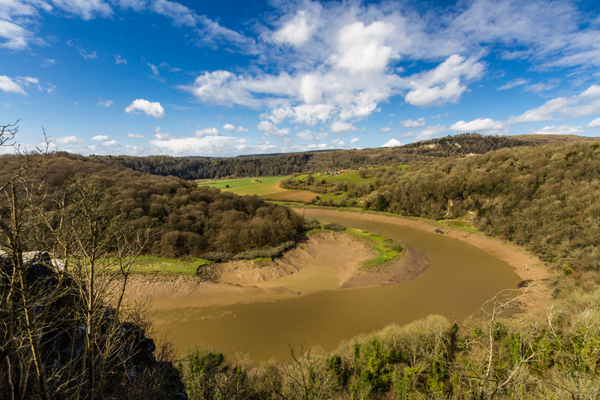
Judicial review and public body decision making
Judicial review (JR) is the process by which judges examine the decisions of public bodies and consider whether the law has been correctly followed. It is important to stress that JR is not a re-run on the merits of the decision – judges confine themselves to considering whether the decision being challenged was lawful, and complies with the principles of public law. The potential grounds for JR are outlined below.
If a JR claim is successful the usual result is that the decision is "quashed" or nullified and has to be taken again. While this means that the public body can take exactly the same decision again, the need to follow proper procedure means that, in practice, at least a better - and often a substantively different - decision results.
JR can be an expensive and time-consuming process but it often the last mechanism people have for checking the abuse of power within Government and public bodies. It is therefore crucial for upholding the rule of law. JR is most effective when it forms part of a focused campaign to raise public awareness about issues of either significant local concern or wider public interest.
In this section
More information about judicial review
The decisions, acts, and failures to act by public bodies exercising public functions are all potentially challengeable by JR. In an environmental context, such bodies may include government ministers, local authorities, Non-Departmental Public Bodies (NDPBs) such as the Environment Agency and Natural England.
The main grounds for JR (which can overlap) include illegality, irrationality, procedural unfairness and incompatibility with the European Convention on Human Rights and/or EU law:
Illegality / public body acting outside their powers - public bodies are generally only free to do what the law says they can do, be that under an Act of Parliament or secondary legislation such as regulations, rules and orders. If public bodies do not follow the law correctly, any resulting decision, act, or failure to act will be unlawful. As well as the limits placed on any powers in legislation, judges have developed public law rules over many years that impose further restrictions on what public bodies can do. For example, where the law gives a public body the ‘discretion’ to take a decision, public law regulates the manner in which that power is exercised, including by requiring the public body:
- to take into account only relevant information and to disregard all irrelevant information;
- to address the right question, and take reasonable steps to obtain the information necessary to make a properly informed decision; and,
- to make sure they have not limited, or ‘fettered’, their discretion by applying a very rigid policy as if it were the law.
Irrationality and proportionality - the courts may intervene and quash a decision where they consider it to be “irrational” or “perverse” (this is sometimes referred to as Wednesbury unreasonableness). The test for irrationality is whether a decision “is so unreasonable that no reasonable authority could ever have come to it”. In practice this can be very difficult to show and there is no special consideration for environmental cases. Because of this, irrationality is usually argued alongside other grounds.
In some cases, particularly where EU law or human rights law is involved, a public body is required to act proportionately. The concept of proportionality involves a balancing exercise between the legitimate aims of the state on one hand, and the protection of the individual’s rights and interests on the other. The test is whether the means employed to achieve the aim correspond to the importance of the aim, and are no more intrusive on the rights of the individual affected than is necessary to achieve the aim.
Procedural unfairness - public bodies must act fairly. They must also be – and be seen to be – impartial. For example, they must not allow decisions to be taken by people who have a financial interest in the outcome or a personal relationship with one of the parties that could give the appearance of bias. If there are express procedures laid down by law they must follow them. For example, a public body may be under a duty to consult people who it believes may be affected by a decision before the decision is made, perhaps because the law says there is such a duty, or perhaps because people have been consulted on similar proposals in the past and so have a reasonable expectation that they will be consulted again.
In order to bring a JR you must be able to show that you have ‘standing’ before the court. For individuals and community groups, this usually means that you are affected in some way (perhaps because the outcome of the decision – be it a proposal for a road scheme or a permit to undertake exploratory fracking - affects your locality). For environmental NGOs, it usually means that the decision, act or failure to act impacts upon your stated purpose or objectives. In practice, while it is always helpful to show that you have been involved in the process leading up to the decision, domestic courts have a liberal approach to standing and it is generally not a problem, especially where points of public interest are involved.
An application for JR must be made within strict time limits. Decisions taken under the Planning Acts must be challenged within 6 weeks of the date of the decision (this is usually the publication of the Decision Notice). If the application is large and/or complex, the developer and the Local Planning Authority (LPA) may have to conclude what is known as a section 106 Agreement (covering matters connected with the application) after the application has been approved in principle and before the Decision Notice is published. In such cases, the six-week limitation period will generally run from the date of the publication of the Decision Notice.
For non-planning cases, the claim must be brought “promptly” and in any event within 3 months. These time limits are strictly applied and the parties to JR cannot agree an extension between themselves. As such, we urge people to seek legal advice urgently when a decision that concerns them is made - or (better still) may be made in the future. It is very challenging for individuals and groups to seek legal advice and fundraise for a possible JR within the strict timeframes involved.
Pre-action protocol
The first step in the JR procedure is to write a formal letter to the proposed defendant setting out your proposed claim and what you are seeking. This is known as a pre-action protocol (or PAP) letter. A response is normally requested within 14 days. However, in planning cases, the 6 week time limit to issue a claim does not leave much (or any) time for pre-action correspondence. This is a particularly important stage of the procedure as it is the first opportunity to test your legal arguments. It is not unknown for the defendant to concede that it has acted unlawfully at this stage, thus avoiding the need for legal action.
Permission to proceed
If the defendant’s response to the PAP is unsatisfactory you may decide to pursue a JR by lodging a claim in the High Court with the relevant fee. This involves the completion of a claim form, setting out your facts, your grounds (why you consider the decision was unlawful), the background to the case with relevant legal provisions and, if you are applying for costs protection, a short statement of your financial means (see the section on Costs, later). This is often the most intensive part of the process for the claimant. We will instruct counsel (either a junior or a QC or both if the case is complex) to advise and draft the statement of facts and grounds.
Once the case is issued, we serve the defendant and any interested party (for example, the holder of the planning permission) with the papers. They can (and almost always do) submit "summary grounds of defence" to explain why it is unarguable and permission should not be granted. In practice, there is a short window of opportunity to reply to those defences.
The court then sends all the correspondence to a judge for a decision on the papers. The test for permission is that you have an arguable case. The Court will weed out cases where it cannot see any arguable error of law, where the claimant cannot show standing or is deemed to be acting vexatiously, or if the case is academic in the sense that it would make no real difference on the ground.
If permission is refused on the papers, you can "renew" the decision to be heard in open court. The other parties may or may not attend. Our experience is that permission is often refused on the papers but granted upon renewal in open court. Sometimes the judge will order that the matter be referred to open court anyway. Just because you have initially been refused permission on the papers does not necessarily mean that you have a weak case – we have had such cases that have ultimately gone on to be successful.
The substantive stage
If permission is granted, the claim proceeds to a full hearing. We await evidence from the defendant, and any interested parties (who tend to put in large amounts of evidence). Sometimes - particularly in urgent cases - a judge may order that both the permission stage and substantive stage be heard at the same time ("a rolled-up hearing"). This is more likely to happen where one party has made an application for the case to be expedited (heard sooner). A rolled-up hearing has the advantage of getting the matter dealt with quickly and in practice is cheaper than the more drawn-out, two stage procedure. However, it can have costs disadvantages.
The final hearing will usually take place a few months after receipt of evidence from the other parties and the claimant filing any further evidence. A few weeks before the date fixed, counsel for both sides will submit "skeleton arguments" - summaries of the respective legal cases. The judge should pre-read these and essential parts of the papers. If this is done, the hearing itself can proceed quite rapidly. JRs seldom take more than three days and are often over within one day.
Judgment
The judge may deliver judgment there and then or orally shortly afterwards but more usually it is "handed-down" in writing later. With oral judgments, a transcript can be obtained, but may have to be paid for. After judgment is given, there is usually a debate about who pays the costs, and whether permission should be given to appeal the decision.
Appeal
Judges usually refuse permission to appeal, and the losing party usually has to apply to the Court of Appeal directly for permission. The issue of costs will be revisited on appeal as the “not prohibitively expensive” for legal action (see below) requirement applies to all stages of a JR.
Going to court is expensive. However, the position is more favourable for claimants in environmental cases because the UK is Party to an international agreement called the Aarhus Convention. There have also been a number of helpful judgments from the Court of Justice of the European Union (CJEU) on the costs of proceedings in environmental cases, which confirm that they must not be “prohibitively expensive” for claimants. As a result of the UK’s ratification of the Aarhus Convention and the rulings of the European Court, there are special costs regimes for environmental cases in England/Wales, Scotland and Northern Ireland.
The general rule in costs is that the loser pays the winner's costs. However, the effect of the Aarhus costs regimes is to initially limit the claimant’s adverse costs (the costs of the defendant public body where they are unsuccessful) to £5,000 where the case is brought by an individual and £10,000 in all other cases. To qualify for Aarhus costs protection you must be a member of the public. This includes individuals, community groups and environmental NGOs and excludes corporate entities.
Claimants are now required to submit a financial schedule to court when applying for JR outlining their major income, expenditure, assets and liabilities. The defendant can apply to raise these caps if, on the basis of that statement, it believes being exposed to higher adverse costs would not make the case prohibitively expensive for you. They must do this early enough in the procedure to enable you to withdraw the proceedings should you wish to do so. Any hearing into the level of the cap must be held in private so that your financial circumstances are not considered in open court. It is also possible to apply to have the initial caps of £5,000 and £10,000 reduced if you can show that these sums would be prohibitively expensive for you.
In addition to your adverse costs, you must pay the Administrative Court fees of around £1,000 and your own legal costs. In relation to the latter, there are two important points to bear in mind:
- Environmental cases are generally very crowd-fundable, especially if the proposal is large, controversial and/or raises important public interest points; and
- Subject to advice from a barrister, we will often represent claimants on what is known as a Discounted Fee Agreement (“DFA”). Under a DFA, we will only charge you an agreed discounted fee unless we win. If we win, we will seek to recover our full fees (at commercial rates) from the defendant and we usually agree not to enforce liability for our costs against you over and above (a) any sums recovered from the other side and (b) any monies raised specifically for the case. So although the sums in play look high, in reality under this arrangement they are limited to what you manage to raise.
Should you be interested in pursuing JR, we obviously discuss all of the cost implications with you. We also set everything out in Client Care documentation, which we are obliged to give you before proceeding. If you have any further questions, we would be pleased to answer them.
Challenges under the Town and Country Planning Act 1990 (TCPA) and the Planning (Listed Buildings and Conservation Areas) Act 1990 (LBCA Act)
Appeals under these statutory provisions follow a similar process to Judicial Review although, crucially, they do not al automatically benefit from Aarhus costs protection. If you have questions about the availability of costs protection for a particular statutory review, please speak to us.
Section 288 of the TCPA 1990 provides that a person who is aggrieved by the decision to grant planning permission or discharge conditions (on an enforcement appeal) can appeal to the High Court. Similarly, section 63 of the LBCA Act provides that a person who is aggrieved by the decision to grant listed building or conservation area consent or discharge conditions (on an enforcement appeal) or by any decision on an associated appeal under section 20 of the LBCA Act, may question the validity of that decision by making an application to the High Court.
Challenges in relation to both of these appeals may be made on the grounds that:
- The decision is not within the powers of the Act; or
- Any of the relevant requirements have not been complied with (‘relevant requirements’ means any requirements of the LBCA Act or the TCP Act, or of the Planning and Tribunals Act 1992, or of any order, regulation or rule made under any of those Acts).
As with JR, these grounds mean in effect that a decision cannot be challenged merely because someone does not agree with the Secretary of State’s decision. Those challenging a decision have to be able to show that a serious mistake was made when reaching the decision; or, for example, that the inquiry, hearing or site visit was not handled correctly or that the procedures were not carried out properly. If a mistake has been made the Courts may decide not to quash the decision if the interests of the person making the challenge have not been prejudiced. Note that under both sections an application to the High Court must be lodged with the Crown Office within sixeeks of the date of the decision letter. This time limit cannot be extended.
In both planning and listed building enforcement notice appeals, and Tree Preservation Order (TPO) enforcement appeals, the appellant, the local planning authority or any person having an interest on the land (to have an interest in the land means essentially to own, part own, lease and, in some cases, occupy the site) to which the enforcement notice relates may challenge the decision in the High Court on a point of law. An application must be made to the Court within 28 days of the date of the decision, unless the period is extended by the court.

